Is there anything better than seeing your name in lights? For brands in the digital age, securing the perfect social media handle is akin to having that shining marquee. A good social media handle can catapult your brand into social media stardom, attracting followers across various social media channels.
It might not be as glamorous as Hollywood, but it will certainly help you get more than just 15 minutes of fame. With consistent social media handles across different platforms, your online presence becomes stronger and more recognizable.
Social media marketing isn’t going anywhere anytime soon. With active users numbering in the billions, it’s important to have a strong presence on your target audience’s channels of choice. Your social media accounts serve as the face of your brand in the digital world, influencing your personal branding and overall marketing strategy. Where to start? By creating an account with a suitable social media handle. But it’s not always quite so simple.
Let’s walk through:
- What a social media handle is, and why it matters.
- How handles appear (or don’t) across different platforms.
- How you can choose the right handle for your brand.
A 200-Year History of the Handle
We’ve been using the word “handle” to mean title or pseudonym for quite some time, influencing our online identity long before the internet existed.
As far back as the nineteenth century, someone who earned a designation like Sir or Doctor was said to “have a handle to his name.” But, if the esteemed knight or doctor went by Skip, he would be going by his “childhood handle” or nickname. This concept of a personal identifier laid the groundwork for how we think about social media profiles today.
In the 1970s, the term came in handy when the use of citizens band radio exploded among commercial truck drivers. In the midst of a nationally imposed speed limit and fuel shortages, truckers took to their CB radios to communicate under assumed callsigns, which they dubbed handles. This early form of personal branding allowed users to establish an identity over the airwaves, much like we do on social media sites now.
When this type of semi-anonymous conversation reached internet chat rooms, group chat apps and instant messaging services, the name stuck. During the early years of social media, handle became an informal way to refer to a screen name. It was the precursor to our modern-day social media accounts, where your handle is often your primary identifier on different social media platforms.
So, What Is a Social Media Handle Today?
On any given social media platform, your handle is a public-facing name associated with your account that you use when connecting with and broadcasting to other users. It’s a key component of your online presence and personal branding, influencing how potential followers perceive your brand.
And there’s an important takeaway to note from our little history lesson: A social handle is more than a simple moniker; it’s a communication tool and a vital part of your marketing strategy.
Your audience or followers will use this unique identifier to find your brand on Facebook, @mention your business in Instagram stories and tag you in social media posts. If you think about it, a handle is really the gateway to all social media engagement across multiple platforms.
Social Media Handle vs. Username
As a public username, a handle often doubles as a login credential. Indeed, most social platforms formally refer to it as a username instead of a handle. However, for your marketing materials and branding efforts, the term “social media handle” emphasizes its role in user engagement and discoverability.
But not all usernames are handles.
After all, no one else cares about your bank account username, since nobody but you will see or use it. But everyone can see your X handle, even if you post privately. That’s why choosing the right social media handle matters for your brand image and online identity.
Social Media Handle vs. Display Name
Depending on the social network, you’ll likely be able to choose a display name that’s different from your handle. More than one account can use the same display name, but a handle is unique to you.
In that sense, a handle is more like a Gmail address or Social Security number. It’s truly one of a kind. Unfortunately, this means your ideal handle may not be available. But, as we’ll see, there are some ways to get around this. Additionally, using a tool like a social media name checker allows you to quickly find available handles that align with your brand.

Here’s How Social Media Handles Show Up in Your Profile
Now that you’ve got a handle on the basics, let’s see how this useful sobriquet fits into your social profile appearance — and how your audience will view it on Facebook, X (FKA Twitter) and Instagram. Understanding how your handle interacts with each social media site is important for maintaining consistent branding and maximizing your marketing strategy.
In your Facebook settings, you’ll have control over two different identifiers:
- Name: This is your display name. It shows up in more prominent text at the top of your profile, but it’s not necessarily unique to you.
- Username: This is your one-of-a-kind handle. It appears after an @ sign in your Facebook profile and in the associated URL. It’s essential for users to find your social media account and for maintaining consistency across different platforms.
Brooklyn-based jewelry company Catbird uses “catbird” as a Facebook display name, but the brand’s handle is @catbirdnyc. This means their profile URL is facebook.com/catbirdnyc. By keeping a consistent social media handle, they ensure their followers can easily find them, even on a different platform.
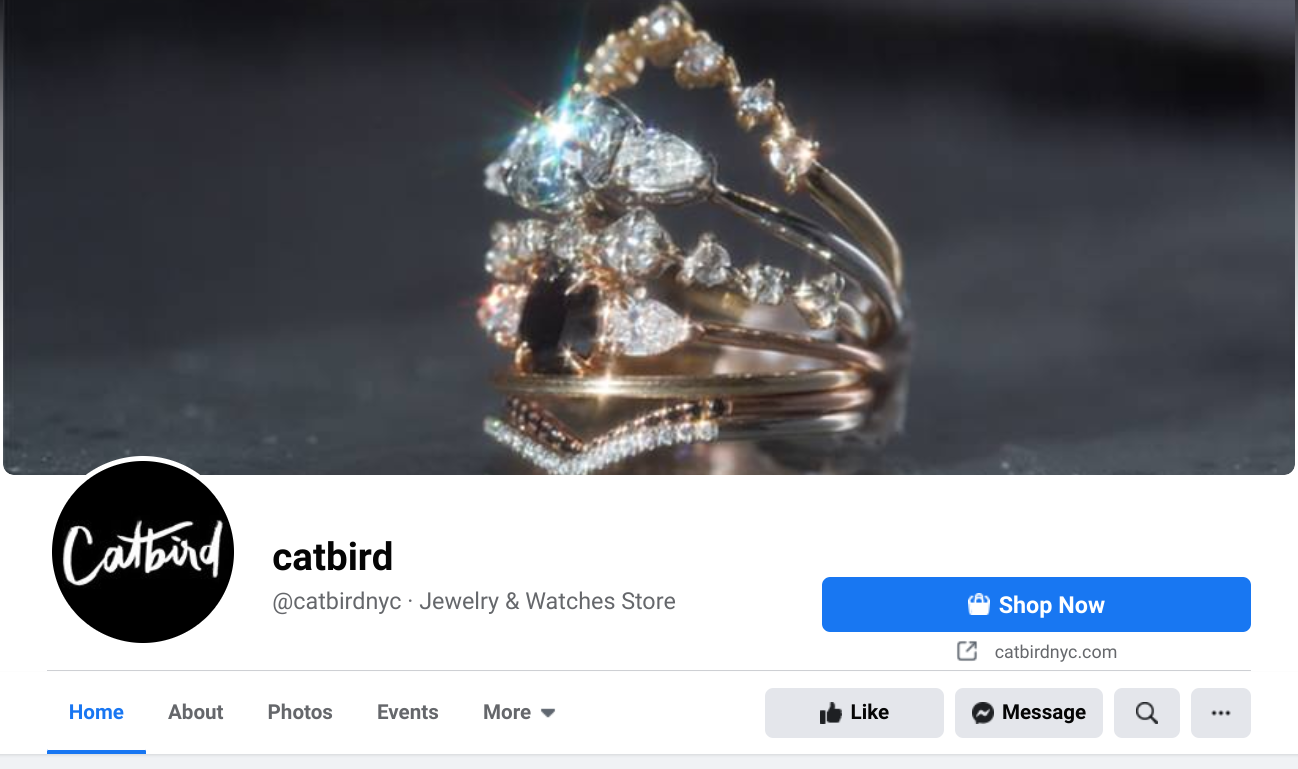
When choosing a handle for a Facebook Page or profile, you’ll need to follow Facebook’s username guidelines:
- Must be at least 5 characters long, up to a 50 character limit.
- May only contain letters, numbers and periods.
- Periods don’t differentiate usernames (e.g., @johnsmith is the same as @john.smith).
X (Formerly Known as Twitter)
When you open up your X account and profile settings, you have exactly the same options:
- Name: This is your display name. It shows up in bigger, bolder letters directly above your handle.
- Username: This is your X handle. It’s unique to your account and follows an @ sign in your profile. It’s also used in your X URL. A good social media handle here can boost your visibility and attract potential followers.
Once again, Catbird uses “catbird” as a display name and @catbirdnyc as its X handle. As a result, the company’s X URL is x.com/catbirdnyc. By maintaining consistent social media handles, they strengthen their online identity and simplify their marketing strategy.
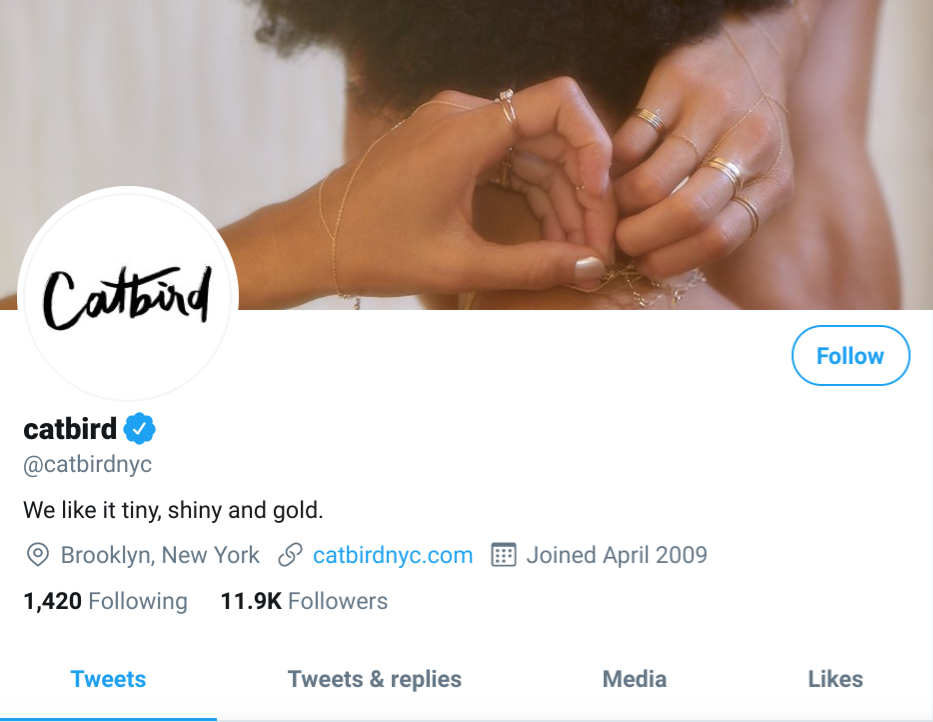
When selecting a handle for your brand, you’ll need to follow X’s username rules:
- May be a maximum length of 15 characters.
- May only contain letters, numbers and underscores.
- Underscores do differentiate accounts (e.g., @johnsmith and @john_smith are different).
Once you get to your Instagram profile settings, you’ll know the drill:
- Name: This is your display name on Instagram. The only difference is that it appears in smaller text lower on your profile.
- Username: This is your handle, which appears alongside an @ sign and in your Instagram URL. However, it shows up first on the screen and in larger letters. Your Instagram handle plays a significant role in your online presence and personal branding on this visual-driven platform.
You should be sensing a pattern by now. Catbird uses “Catbird” as a display name and @catbirdnyc as an Instagram handle. Outside the app, the brand’s profile lives at instagram.com/catbirdnyc. Having a consistent social media handle across multiple platforms helps to build a strong social media profile.

Keep these Instagram tips in mind when choosing your handle:
- May be a maximum length of 30 characters.
- May only contain letters, numbers, periods and underscores.
- Periods and underscores do differentiate accounts.
Elsewhere…
Not all platforms make use of the handle as a login or communication tool.
For instance, LinkedIn and YouTube will prompt you to log in using a phone number or email address. From there, you can edit your display name so it reflects your brand name. However, platforms like YouTube have introduced the concept of the YouTube handle, allowing for more consistent branding.
It’s important to ensure your display name aligns with your branding and marketing materials. When members of your audience search for you on platforms that don’t use handles, they’ll see display names pop up in the results.
Let’s compare what that looks like.
No Handle? No Problem
With an Instagram search, handles appear in bold letters, followed by display names in gray. Here’s how it looks when searching for jewelry brand Mejuri.
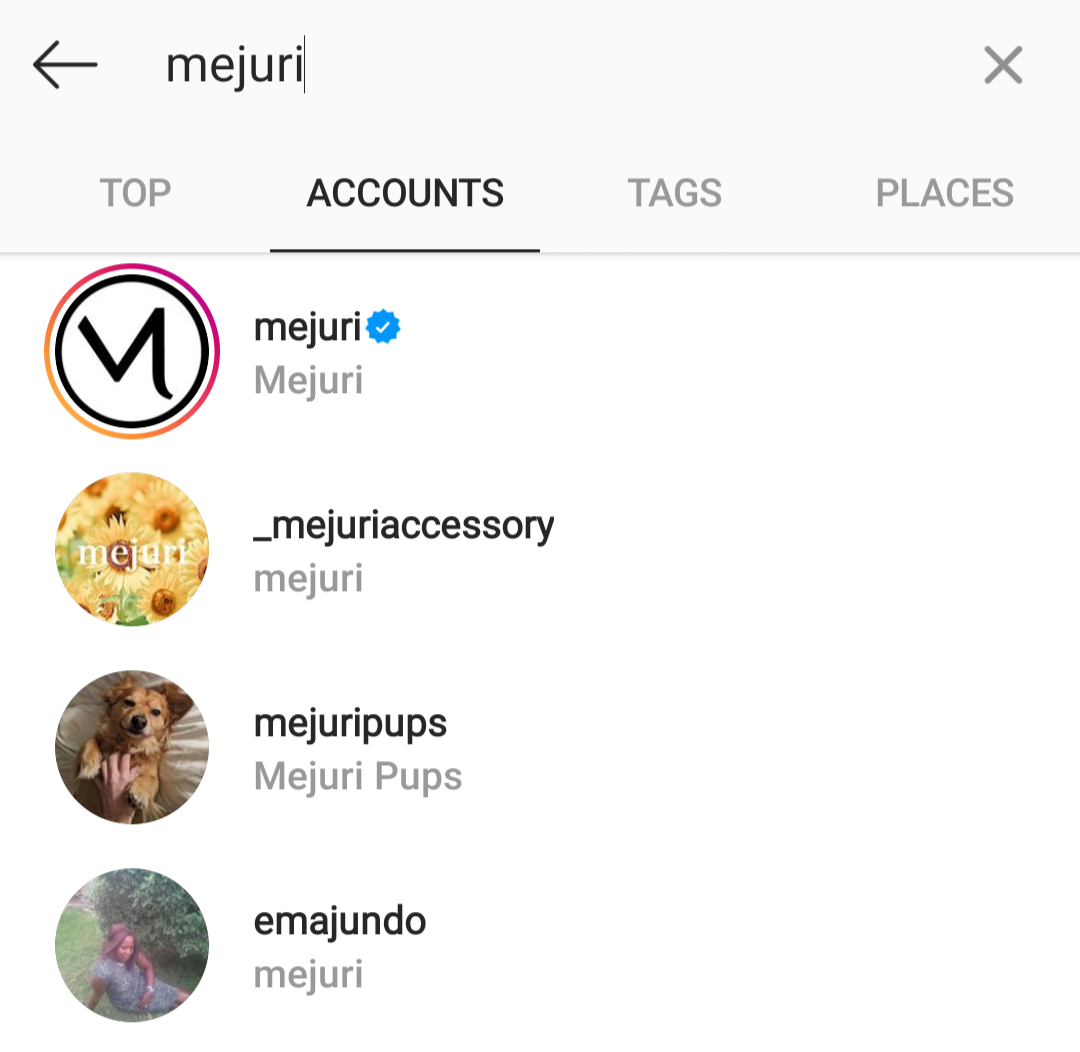
Things show up a little differently on YouTube, where video titles are the most prominent. Each account’s display name appears in gray; some are even two words with spaces in the middle. But with the introduction of the YouTube handle, brands can now have a unique identifier on this social media channel as well.

Let’s look more closely at that first result from that search. On YouTube, the account is named “Lisa Wei.” On Instagram, this social media influencer shares lifestyle content under the delightfully clever handle @getawei. She also blogs at getawei.com.
But a YouTube search for “getawei” still pulls up her channel, even though it’s not technically a handle there. How is this possible?

It’s done with a bit of powder and rouge called a vanity URL.
Dress Up Other Social Media Profiles With Vanity URLs
Like many influencers and businesses, Lisa uses a custom URL, youtube.com/getawei, to tie in her brand name with her YouTube channel. This helps maintain a consistent social media handle across different platforms, even when the platform doesn’t support handles in the traditional sense.
Here are a few advantages of using a custom or vanity URL:
- It keeps your brand consistent across multiple social media accounts.
- It makes your content easier for people to find.
- It’s short and sweet.
- It’s easy to remember, pronounce, and spell.
- And it’s a heck of a lot nicer than youtube.com/channel/UCixI6cYiwQM_6ptz7xMIULA.

As we’ve seen with Catbird, platforms including Facebook, X and Instagram helpfully co-opt social media handles when creating custom URLs for each profile. However, others, including YouTube and LinkedIn, allow users to create their own. Utilizing a social media name checker can help you find available handles and URLs that match your desired social media handle.
YouTube
To create a custom channel URL on YouTube, your channel must meet the following criteria:
- Be at least 30 days old.
- Have at least 100 subscribers.
- Have a profile image and channel art uploaded.
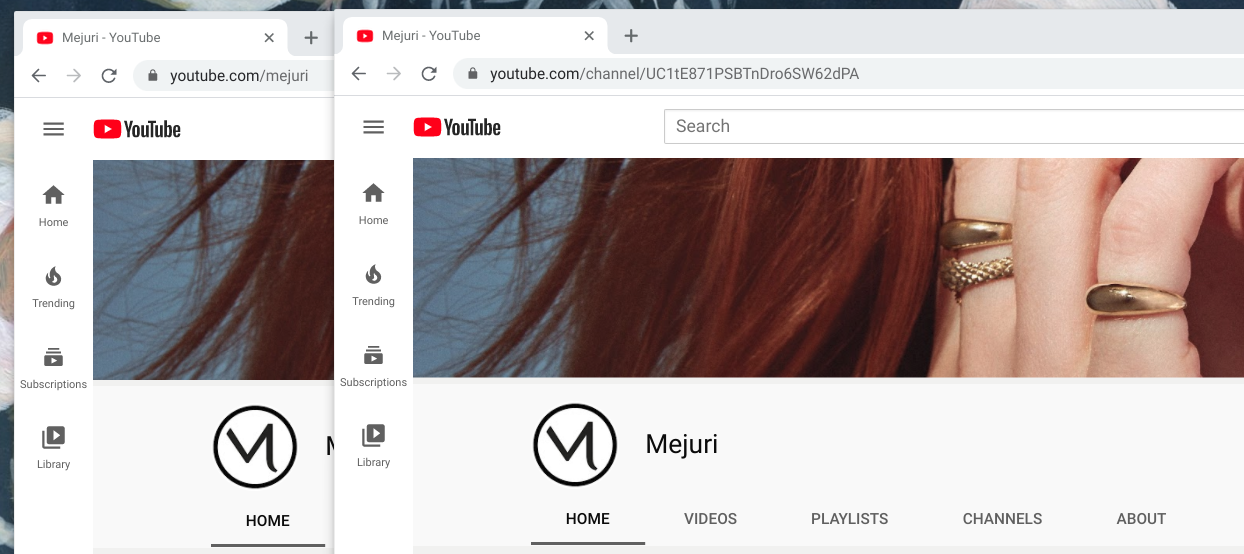
Essentially, YouTube wants to make sure yours is a real channel with a legitimate audience before giving away such valuable virtual real estate. Once it’s clear that your brand is serious about social media, you can add a custom URL through your account settings. This custom URL acts as your YouTube handle, enhancing your online identity.
Creating a vanity URL on LinkedIn doesn’t involve meeting those types of eligibility requirements — you can add one as soon as your account is active.
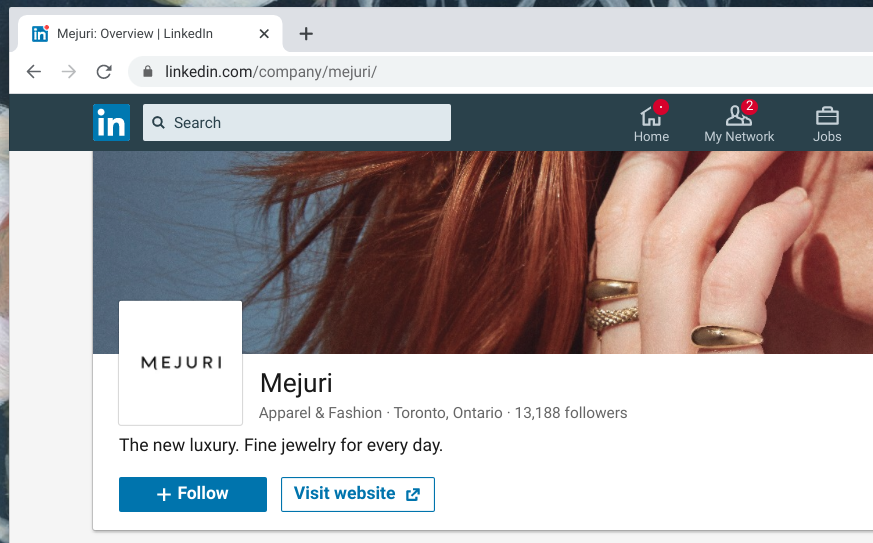
When choosing what to include, make sure your slug follows these guidelines:
- Must be between 5 and 30 characters.
- May only contain letters and numbers.
9 Best Practices for Creating Social Media Handles
Whether you’re a marketer tasked with creating a social media strategy from scratch, or an entrepreneur launching or running multiple social media accounts for your new venture, keep these tips in mind:
1. Assume Someone Else Snagged Your Ideal Handle Already
As of April 2024, brands looking to make a mark on social media now have to contend with some 5.07 billion social media users worldwide. Since handles are available on a first-come, first-served basis, that adds up to a lot of off-limits usernames. The competition for the perfect social media handle is fierce across every social media site.
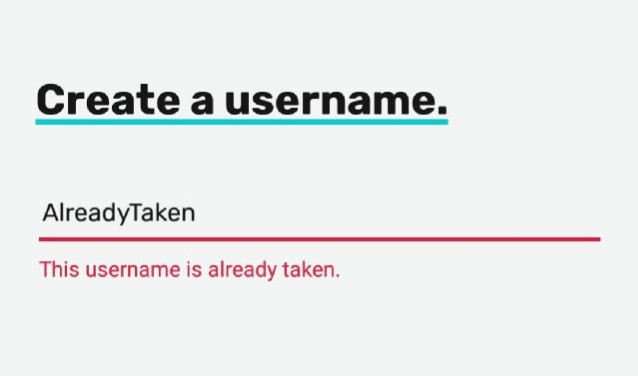
If you’re still in the blue-sky phase with a new business idea, choosing a completely original brand name can improve your chances of securing the perfect handle across multiple platforms. This can help in maintaining a consistent social media handle, which is important for brand recognition and marketing strategy.
If you believe another user is committing trademark infringement by using your business name, there are some avenues to resolve this. But you can’t always rely on that process to gain ownership of your perfect handle.
2. Check Availability Across Various Platforms
If your brand name is already written in stone, find out what’s available and work from here. Using a social media name checker can save you time and help you find a good social media handle that is available across different platforms. These sites allow you to check the availability of usernames and handles across hundreds of social media platforms:
Take the results with a grain of salt. The only way to know if the name is truly available is to go through the process of creating an account or changing an existing handle.
3. Align Your Handles With Your Business Name and Domain Name
The most logical thing to do when approaching social media management is to assign the same name — or variations of it — to your business, web domain and social profiles.
This keeps it clean and simple for you and your audience:
- When talking about your business, you and your customers can use one name and one name only.
- When your followers want to find your website or look you up on Google Maps, they can type that familiar name into the search bar and reach you right away.
This alignment strengthens your online presence and helps in personal branding.
4. Choose Matching Handles for Brand Consistency
Ideally, your social media handles will be consistent across all platforms.
Take Etsy. The company’s site links out to 5 social media profiles, all with @etsy as a handle or the /etsy/ slug in a vanity URL. It’s highly satisfying.
But, more than that, a consistent naming mechanism promotes better communication and bolsters brand recognition:
- When interacting with social media campaigns, audience members know there’s just one name to @mention, regardless of the platform they’re using.
- When you get business cards and event banners printed up, you can slap @brandname on the collateral and you’re all set to jet.
Consistency in your social media handles is important for your marketing strategy and helps potential followers find you easily.
5. Opt for an Original Name Instead of Punctuation
Different platforms allow different characters. So, the easiest way to achieve consistency is to avoid periods and underscores altogether.
Which would you rather explain to your audience?
This:
- Facebook: @brand.name
- Instagram: @br.andname
- Twitter: @brandname_
Or:
- Facebook, Instagram and Twitter: @heybrandname
It’s not even a contest, is it? These organizations — whose top handle choices were probably taken — created brand-aligned Instagram handles without using punctuation:
- Gemological Institute of America: @giagrams.
- Chatsworth House: @chatsworthofficial.
- Christian Louboutin: @louboutinworld.
- Modsy: @modsydesign.
- Pietra: @shoppietra.
- GLDN: @itsgldn.
By choosing an original name, you can create a great social media handle that is consistent and easy to remember.
6. Keep Social Media Handles Concise
A relatively short and to-the-point handle contributes to clean and memorable social media branding. It should be quick and easy to type so your ideal customer can find you faster.
If you have a long company name to contend with, you could choose to spell it out or acronymize:
- The Museum of Modern Art (MoMA): @themuseumofmodernart.
- Chicago Architecture Center: @chiarchitecture.
- New York Botanical Garden: @nybg.
Also, remember to stick to each platform’s character limits. If you plan to have a presence on X, choosing a handle that’s 15 characters or less will help your brand’s social media team maintain consistency across all platforms.
7. Make Sure They’re Easy To Spell and Pronounce
Generating word-of-mouth interest is one of the many benefits of going social. But your handle should roll off the tongue if you want to encourage conversation. And, it should be easy to spell.
As Alexis Nido-Russo, founder and CEO of Local Eclectic, noted, “Don’t choose a brand name that no one can say or spell. I own most misspellings of ‘eclectic’ online.”
That’s a potentially pricey mistake for the brand and an inconvenience for the would-be customer. An easy-to-spell handle helps in attracting potential followers and increases the effectiveness of your marketing materials.
8. Select a Name That Stands the Test of Time
It doesn’t matter if you’re going live every Wednesday or creating evergreen content; your social media handles should remain relevant, now and in the future.
It’s not always easy — or possible — to change a handle or vanity URL once you’ve chosen it. A name that boxes your brand into a particular product category, for instance, can perpetuate misinformation about what you do if you later expand your offerings.
When kicking off your brand’s social media presence, pick a handle that can grow with the business. This ensures a perfect social media handle that remains effective over time.
9. Be Ready With a Backup Plan if Your Preferred Handles Aren’t Available
After doing some availability research and considering what’s left, you might find that you still can’t get the most succinct social media handle for your brand.
The reason Catbird operates under @catbirdnyc and not simply @catbird is probably this: A design professional by the name of Ryan (you guessed it) Catbird nabbed the X handle two years before the jewelry brand made their X debut. And on Facebook, the handle is owned by Cathy of North Carolina.
Instead of choosing mismatched handles, Catbird prioritized consistency. (They actually own @catbird on Instagram, but direct visitors to their official account.)
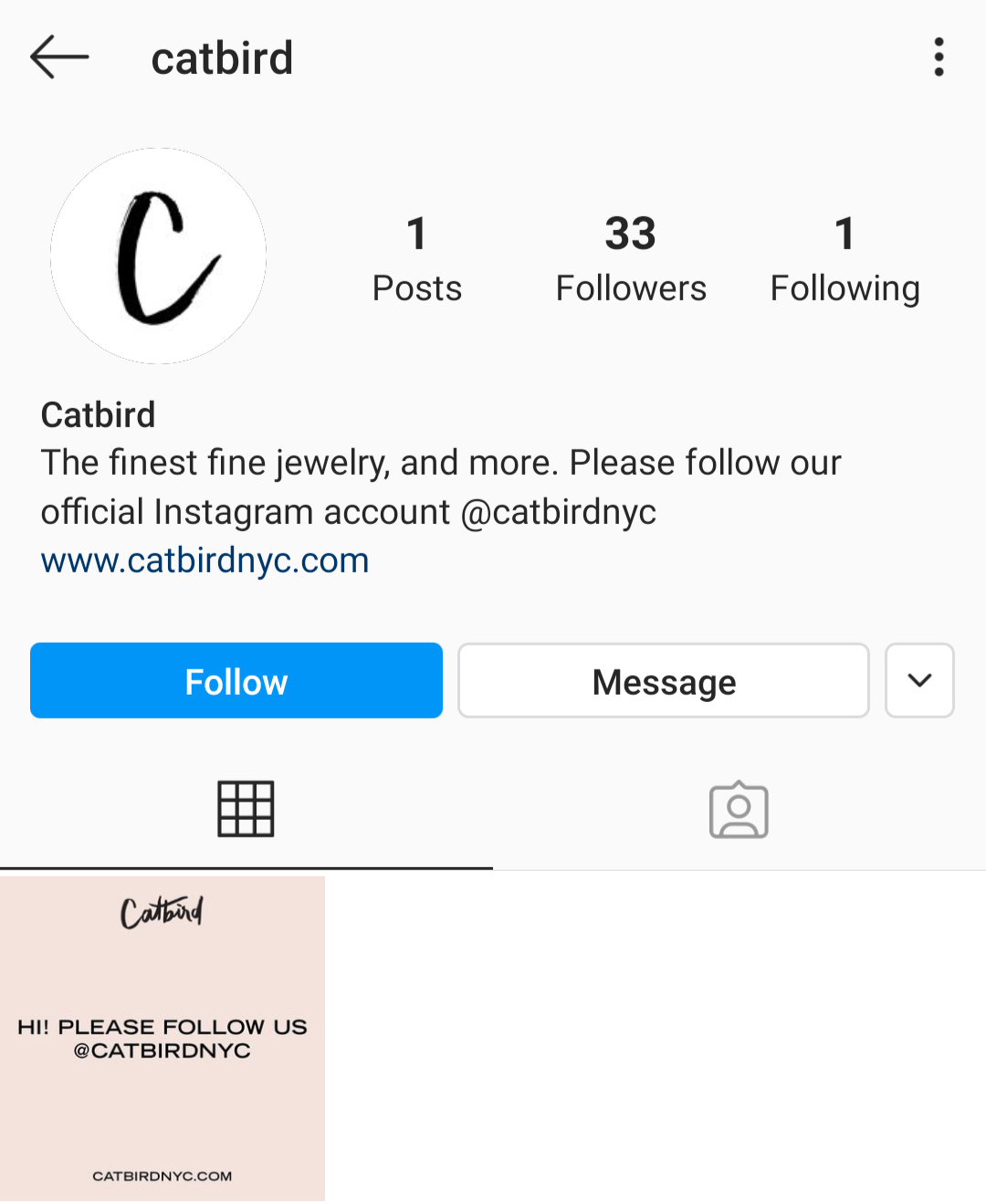
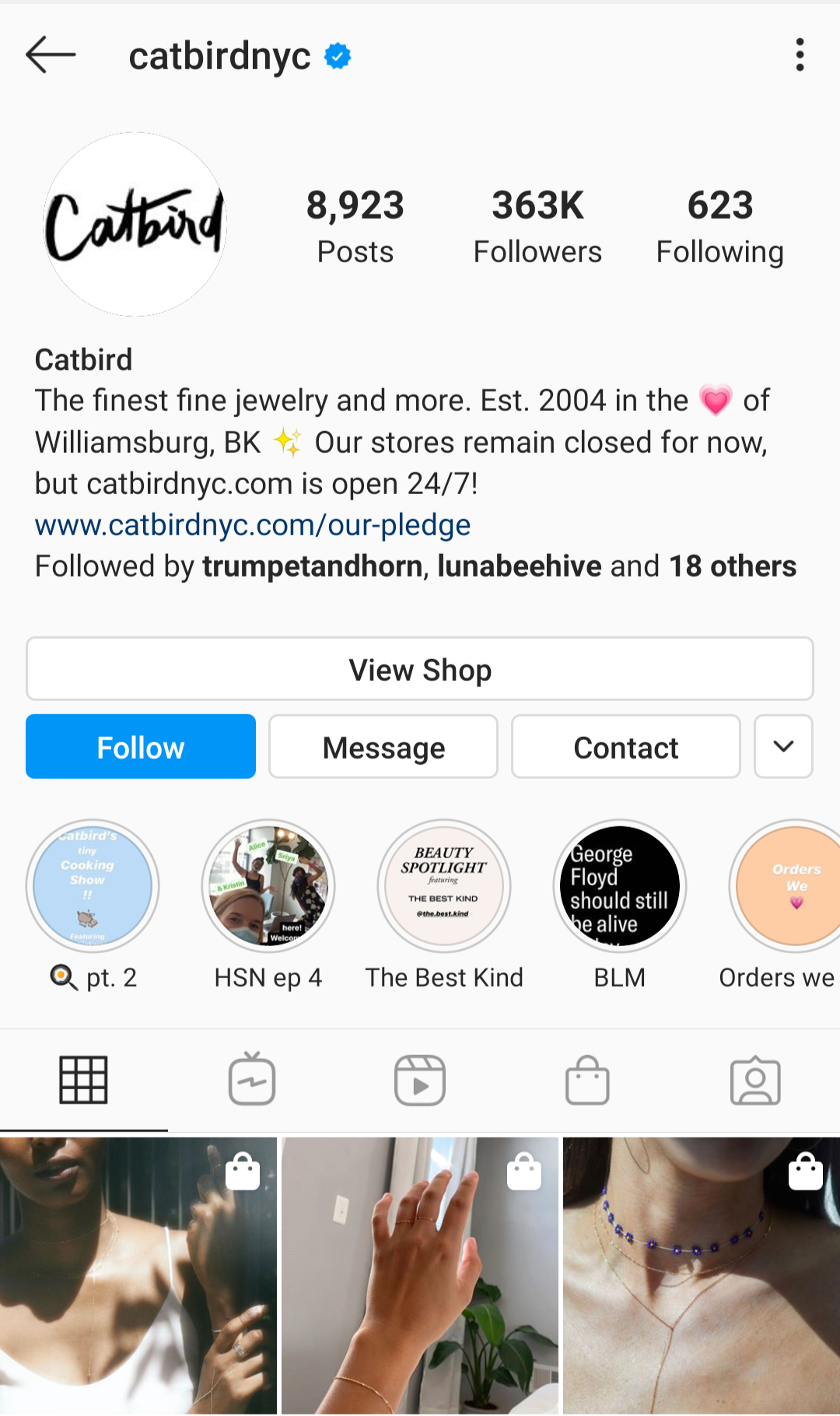
With all handles aligned, Catbird has a social media presence as distinctive as the content they produce. Recognizing that social media handles are important for brand recognition, they adapted by choosing a consistent alternative across platforms.
If you keep these same strategies in mind, your brand can do the same. By focusing on creating the right social media handle, you enhance your online identity and attract more active users to your social media accounts.
Editor’s Note: Updated December 2024.







